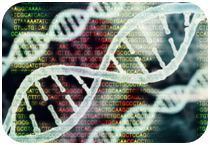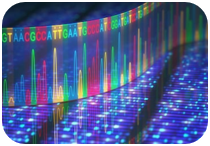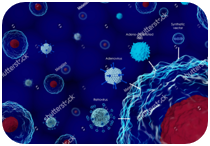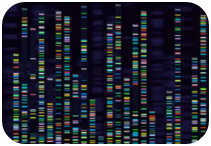With the enormous advances of metagenomic and metatranscriptomic sequencing techniques, researchers are able tostudy microbiota in a wide latitude and at a much deeper level – to identify microbes to species and even strains,to interpret a massive amount of data that can be applied to taxonomic or functional profiling in a fairly short period of time,and to link microbiota to macroscopical views such as health conditions… As metatranscriptomic analysis providesinstrumental insight into activities of genes by examining gene expression, combining metagenomic and metatranscriptomicanalysis will promise the more comprehensive understanding of microbiota to facilitate both basic interpretations and practicalapplications.
CD Genomics as a preeminent corporation that specializes in multi-omics and equipped with state-of-the-arttechniques and bioinformatics platforms, as well as well-experienced scientists, provides comprehensive and delicatebioinformatics services for your gut microbiota research. We offer diversified data analysis services to meet;the needs of your metagenomics and metatranscriptomics programs, which include but not limited to:
| Preprocessing and quality control filtering | Sequence quality checking, removing adapters and low-quality bases, removing contaminations, and final quality control run. |
| Operational taxonomic unit (OTU) binning | Grouping reads or contigs and assigning them to OTUs. Binning methods can be based on compositional features and/or alignment (similarity). |
| Taxonomy assignment | Searching sequences against databases of pre-assigned reference sequences for the classification practice. |
| Abundance table construction | Constructing OTU abundance table where each entry in the table corresponds to the number of reads observed for each sample corresponding to each OTU. |
| Compositional data analysis (CoDA) | Providing theory and methods to deal with compositional data in a sound and principled way. |
| Normalization | Identifying and removing systematic variability, a wide range of normalization methods for high-dimensional count data can be applied. |
| - Relative abundances computation | Describing how common or rare a species is relative to other species in a given community by calculating the total area under the curves. |
| - Rarefaction | Assessing species richness from the results of sampling, and allowing the calculation of species richnessfor a given number of individual samples, based on the construction of rarefaction curves. |
| Phylogenetic analysis | Phylogenetic trees can be used to obtain phylogenetic distances between samples. |
| Diversity analysis | |
| - Alpha diversity | The diversity within a specific sample – the average species diversity in a habitat or specific area. |
| - Beta diversity | The diversity between samples – the ratio between local or alpha diversity and regional diversity. |
| Ordination | |
| - Principal componant analysis (PCA) | To analyze a quantitative observations/variables table, correlation or covariance matrix. |
| - Principal coordinates analysis (PCoA) | To explore and visualize a square matrix that describes the similarity or the dissimilarity of data. |
| - Non-metric multidimensional scaling (NMDS) | An indirect gradient analysis approach that produces an ordination based on a distance or dissimilarity matrix. |
| Multivariate differential abundance testing | Test of differences in microbial composition between two or more groups of samples. |
| Univariate differential abundance testing | To identify microbiome taxa associated with singular biological condition. |
| Data annotation | Comparing the individual sequence reads in databases and assigning a unique function to each read. |
| Microbial signatures | When groups of microbial taxa present in a human body habitat that are consistently predictive of host phenotype for different illnesses or treatments, these microbial signatures can be used to build models that predict therapeutic outcomes based on an individual's specific microbiota. |
| Biomarker discovery | Biomarker discovery that identifies organisms, genes, or pathways consistently explains the differencesbetween two or more microbial communities. |
| Functional interpretation | Interactive exploration and analysis of the functional potential of a microbiota. |
| Exploratory statistical analysis | Provide exploratory analysis services of human gut metagenomes and metatranscriptome. |
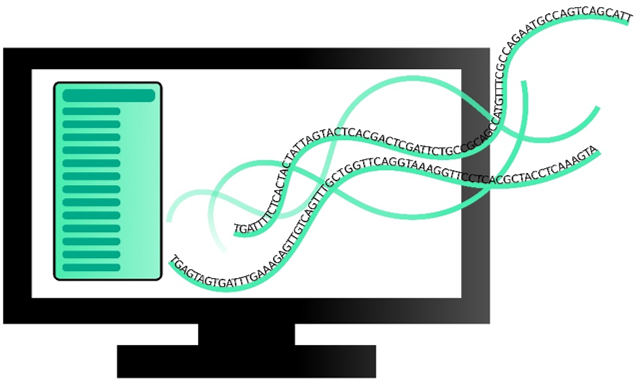
Coupled state-of-the-art techniques with powerful analysis platforms that carry abundant analytical tools and sophisticated pipelines, we have full capability of exploring the taxonomic and functional compositions of gut microbial communities that play crucial roles in human health. Correspondingly, we provide comprehensive and delicate bioinformatics services for your gut microbiota research in order to bring more blessings for our future. To find out more about our bioinformatic services to meet your specific needs, please feel free to contact us!
*For Research Use Only. Not for use in diagnostic procedures.



